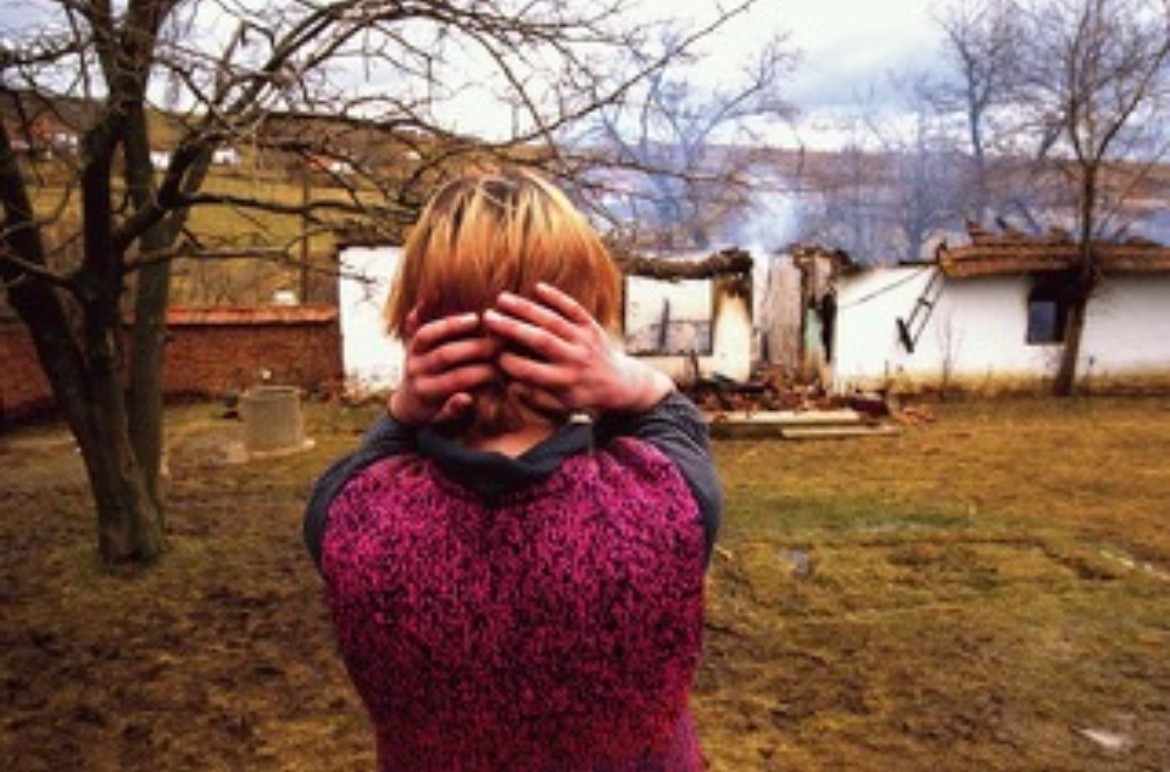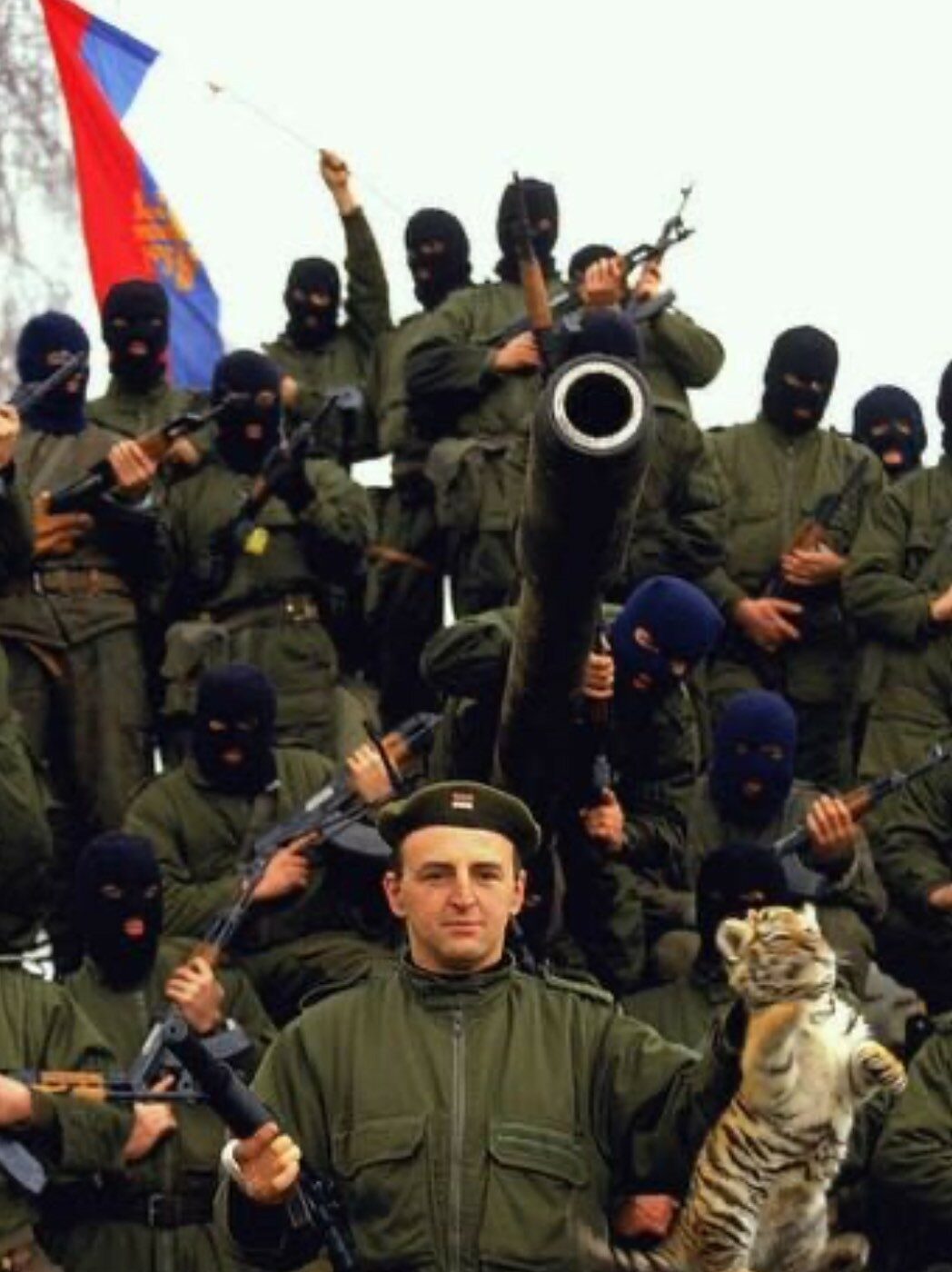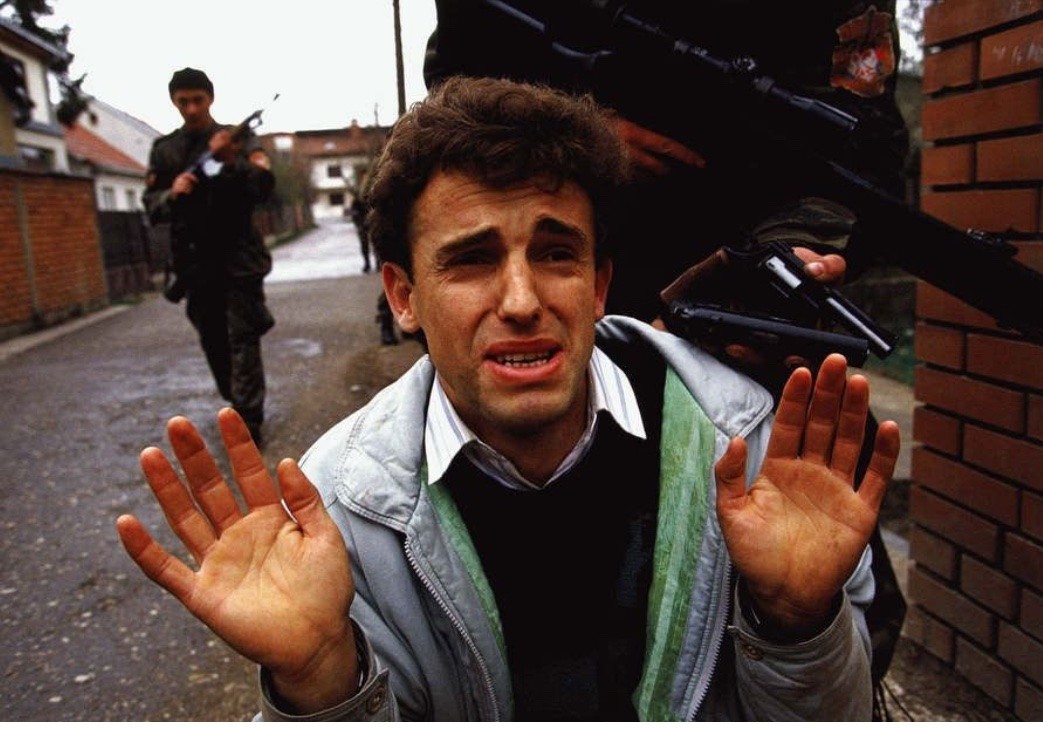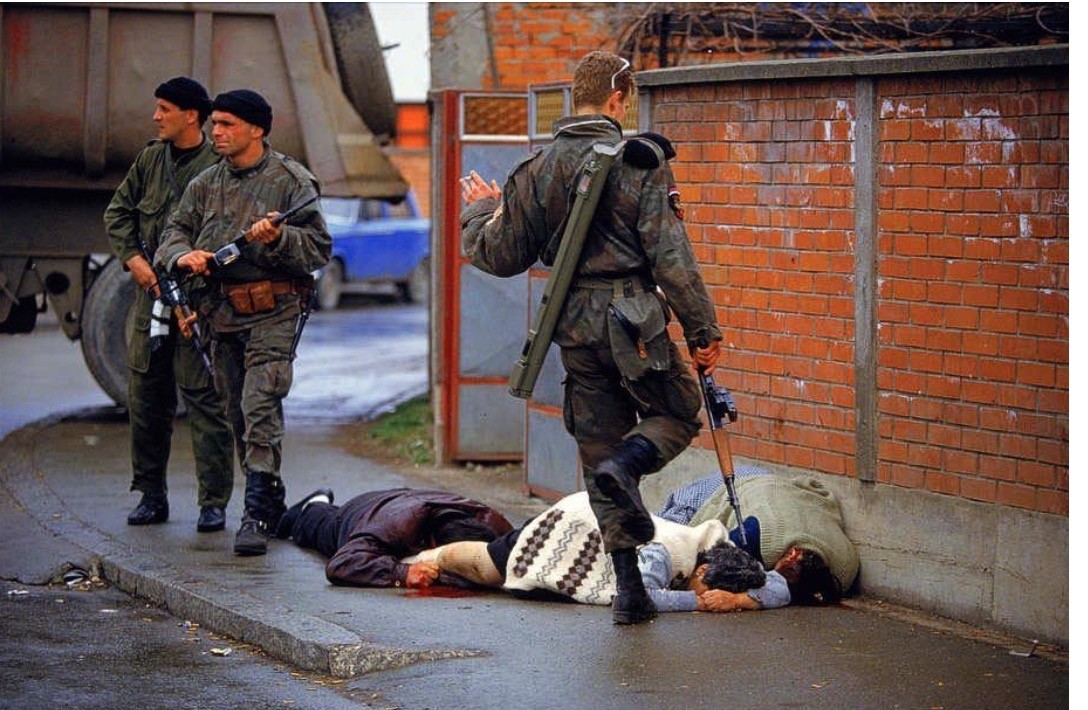American photographer Ron Haviv shared his experiences documenting the breakup of Yugoslavia, from Slovenia’s independence to Kosovo’s liberation, capturing the devastating human impact of the conflicts and the people affected.
The wars in former Yugoslavia “were about eliminating the idea of the identity of ‘the other’ whether they were Slovenian, Croat, Bosniak, Kosovar and so on,” Ron Haviv, a photojournalist who covered these wars, believes, after witnessing the violence firsthand. He takes pride in his photographs, used as evidence in war crimes trials.
During an interview for Kallxo Përnime TV Programme on July 20, Haviv shared memories of the atrocities he documented in Kosovo during 1998-1999, which show aspects of ethnic cleansing and displacement, including refugee camps, burned corpses and destroyed infrastructure left behind.
He recounted the story of a photograph showing burn marks of Kolë Kushmani, an ethnic Albanian from Gjakova/Djakovica , who was killed by Russian mercenaries during NATO bombings in Kosovo.
“His body was burned, leaving behind an outline that resembles a crime scene sketch. However, this is actually the remaining part of his body. This happened in the living room of his house,” Haviv said.

Burn marks left by the burnt corpse of Kosovo Albanian Kolë Kushmani. Photo: Courtesy of Ron Haviv
Haviv emphasised that the war in Kosovo differed from other Balkan wars because of the frequency of mass killings.
“The difference between the war in Kosovo and those in Croatia, Bosnia, and Slovenia was that more often than not, there was more than one death. Entire families were often killed, we have the extreme cases like Recak and the Jashari family,” Haviv explained while showing images of a mourning family that had, lost several members in 1998.
Recak/Racak was surrounded and attacked by Serbian security forces on the morning of January 15, 1999, who killed 45 Kosovo Albanian civilians. The Recak/Racak massacre provoked a shift in Western policy towards Kosovo and became a turning point in the conflict between Milosevic’s troops and police forces and the KLA guerrillas who were fighting for independence.
It was an important factor in NATO’s decision to launch air strikes on Yugoslavia two months later to force Milosevic to pull his troops out of Kosovo.

Kosovo Albanians excited after seeing a NATO helicopter in Pristina in 1999. Photo: Courtesy of Ron Haviv
The massacre of the family of Kosovo Liberation Army co-founder, Adem Jashari, in March 1998, by the Serbian forces, marked the beginning of the Kosovo war.
A total of 59 people, including women and children, were killed in the assault by Serbian police forces, in the village of Prekaz in the Skënderaj/Srbica municipality, during the siege on the family compound from March 5-7. Of the Jashari family who were present during the three-day attack, only Bashkim Jashari, the son of Adem Jashari’s brother, Rifat, now the Commander of the Kosovo Security Forces, KSF, and Besarta, the daughter of the other brother, Hamza, are still alive.
Haviv also documented many images of refugees in Kukës, Albania, a city bordering Kosovo, where most of the refugees took shelter. His photos capture the despair that accompanied them as many had lost family members.
He had also captured a five-week-old baby who died from the cold and the moment when the baby’s grandmother was cleaning the body for burial preparation.
“This five-week-old baby died simply because [of being] exposed to the elements in the mountains… because it was cold” Haviv recalled.
Witnessing the Destruction and Resilience of Kosovar Civilians

Kosovo Liberation Army, KLA, soldiers cleaning their boots in a stream. Photo: Courtesy of Ron Haviv
Haviv noted that, during the Kosovo war, a common occurrence was the burning of civilian homes by Serbian forces, followed by the ethnic Albanians’ will and courage to rebuild them as long as they could return after fleeing.
“Even when villages were attacked in 1998, and everyone had to flee, they sought refuge in the mountains of Drenica to stay close to their homes. When they had the chance to return, many said, ‘Not Canada, not New York, but back to my home in Kosovo.’ People were very attached to their land, and they did not give up, even when international warnings about mined areas existed. They slept in tents in their yards,” Haviv added.
He noted that during the days of liberation of Kosovo in June 1999, there was an extraordinary energy and positivity in Kosovo, mixed with sadness due to the immense losses people had suffered.
Documenting the Start of Former Yugoslavia’s Disintegration

A woman looks at her house being burnt down. Photo: Courtesy of Ron Haviv
At the BIRN ‘Reporting House’ exhibition, Haviv recalled arriving from New York to the Balkans, specifically Slovenia, during its declaration of independence.
He then documented the liberation of Vukovar in Croatia and the city’s destruction.
“It was chaos, with irregular armies and young men who had just come to fight,” he said.
During the war in Bosnia, which started in 1992, Haviv documented battles between Serbs and Bosniaks and [Zeljko Raznatovic] Arkan’s paramilitary unit, including the killing of some ethnic Albanians from North Macedonia.
Arkan was the most notorious Serbian paramilitary chief of the 1990s wars. His unit, the Serbian Volunteer Guard, known as Arkan’s Tigers, was accused of committing war crimes across the former Yugoslavia. Arkan was seen as a dangerous individual who was covertly backed by Slobodan Milosevic’s regime.
At that time, according to Haviv, Serbian forces and paramilitaries had no problem with photographers accompanying them during their operations, as “they believed they were in the right”.
“Arkan came with his paramilitary unit, ‘Tigers,’ approached the media, and said that he ‘came to liberate the area from fundamentalist Muslims,’ but there was no evidence that the city was like that in March 1992,” Haviv recalled, talking about one of his famous photos of Arkan holding a tiger and his paramilitaries in the background with masks covering their faces.

Arkan and his paramilitary unit Tigers. Photo: Courtesy of Ron Haviv
In 1992, Haviv met Hajrush Ziberi, an ethnic Albanian from North Macedonia who was arrested by Arkan’s Tigers in Bijelina, Bosnia and Herzegovina, and later found dead in the Drina River.
“[Arkan’s forces] showed me his ID and kept shouting, ‘Kosovar, Kosovar, Kosovar,’ as if to say ‘Kosovar, terrorist,’” Haviv recounted, adding that Ziberi was arrested in a mosque where he was hiding.
“He worked in a pizza shop across from the mosque. The forces entered the mosque, then I heard a noise from a room and found Hajrush, he was just a poor child hiding in the mosque,” Haviv explained.
Later, Ziberi “flew out of a window and landed next to our feet,” but he survived.
“They caught him, doused him with water as if baptising him, and then took him to a house,” he added.
“The next day, I went to that house, but it was empty. I went to the hospital to find him, but he wasn’t there. In 2003, or a bit later, his brother contacted me. Hajrush was found dead, thrown into the river. He was identified through DNA and buried in North Macedonia,” Haviv recounted.

Hajrush Ziberi, ethnic Albanian from North Macedonia arrested by Arkans paramilitary unit in Bosnia and Herzegovina in 1992. Photo: Courtesy of Ron Haviv
The couple that Hajrush worked for at the pizza shop were also killed, and a picture of their dead bodies and some paramilitaries kicking them has since been used as evidence in war crimes trials.
“They were [ethnic] Albanians from North Macedonia, husband and wife,” Haviv recalled, explaining that “there was a lot of shouting, then the soldiers yelled at me in English, ‘No photos,’ after some shots”.
”The man fell to the ground, and his wife tried to stop the bleeding, ” he continued showing a picture of a soldier kicking one of the corpses.
“This person [Srdjan Golubovic] is now a DJ in Serbia,” Haviv noted.

Srdjan Golubovic, member of Arkans paramilitary unit kicking a corpse in Bosnia and Herzegovina. Photo: Courtesy of Ron Haviv
Haviv also remembered visiting women and children at the UN base in Bosnia and Herzegovina, where the wives and children of men killed in Srebrenica Genocide were gathered.
“There were so many people but so much silence. Everyone was in shock, not speaking. I approached a group of women and asked, ‘Where are the men?’ and they all burst into tears,” he recalled.
According to Haviv, these photos resemble the black-and-white images from World War II, “The only difference is that these are in colour and from 1992.”
[embedded content]
Please enable JavaScript to view the comments powered by Disqus.